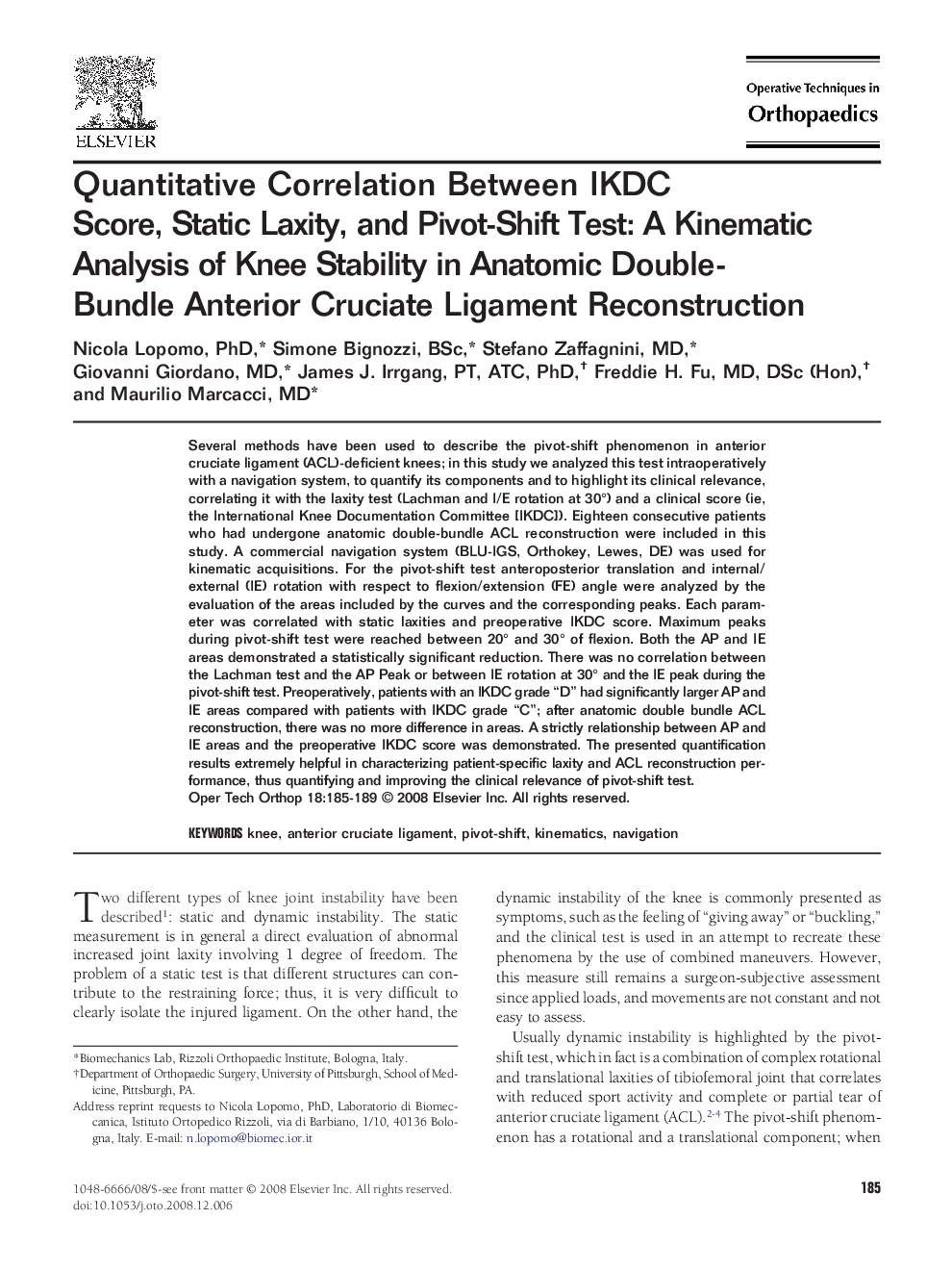| Article ID | Journal | Published Year | Pages | File Type |
|---|---|---|---|---|
| 4079161 | Operative Techniques in Orthopaedics | 2008 | 5 Pages |
Several methods have been used to describe the pivot-shift phenomenon in anterior cruciate ligament (ACL)-deficient knees; in this study we analyzed this test intraoperatively with a navigation system, to quantify its components and to highlight its clinical relevance, correlating it with the laxity test (Lachman and I/E rotation at 30°) and a clinical score (ie, the International Knee Documentation Committee [IKDC]). Eighteen consecutive patients who had undergone anatomic double-bundle ACL reconstruction were included in this study. A commercial navigation system (BLU-IGS, Orthokey, Lewes, DE) was used for kinematic acquisitions. For the pivot-shift test anteroposterior translation and internal/external (IE) rotation with respect to flexion/extension (FE) angle were analyzed by the evaluation of the areas included by the curves and the corresponding peaks. Each parameter was correlated with static laxities and preoperative IKDC score. Maximum peaks during pivot-shift test were reached between 20° and 30° of flexion. Both the AP and IE areas demonstrated a statistically significant reduction. There was no correlation between the Lachman test and the AP Peak or between IE rotation at 30° and the IE peak during the pivot-shift test. Preoperatively, patients with an IKDC grade “D” had significantly larger AP and IE areas compared with patients with IKDC grade “C”; after anatomic double bundle ACL reconstruction, there was no more difference in areas. A strictly relationship between AP and IE areas and the preoperative IKDC score was demonstrated. The presented quantification results extremely helpful in characterizing patient-specific laxity and ACL reconstruction performance, thus quantifying and improving the clinical relevance of pivot-shift test.
